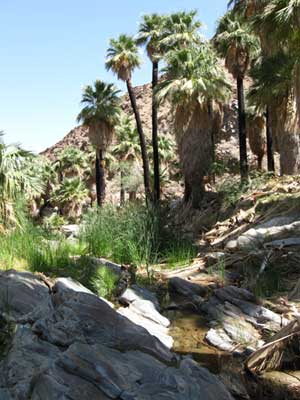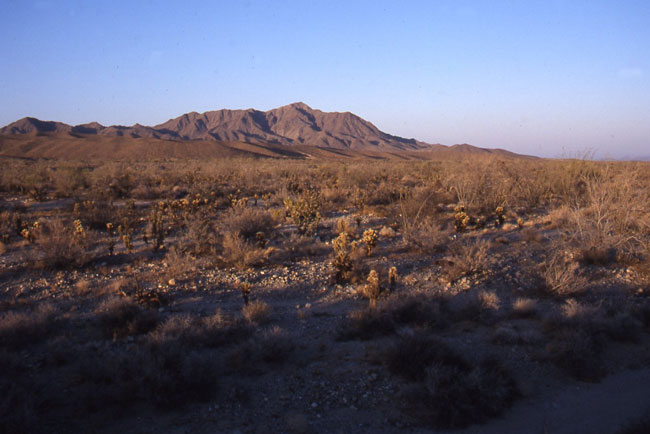October 12, 2009
Salazar Plans to Expedite Renewables on California Desert

Secretary of the Interior Ken Salazar and Bureau of Land Management Director Bob Abbey on October 9 officially opened a California Renewable Energy Coordination Office (RECO), one of several Interior initiatives to expedite the leasing and production of renewable energy resources on public lands in the West.
Other offices will open in Nevada, Arizona and Wyoming, along with renewable permitting teams in six other western states, to swiftly complete application reviews on solar, wind, geothermal, and transmission projects on public lands. Currently BLM has received about 500 renewable energy project applications and the submissions are growing.
“With coordinated environmental studies, good land-use planning and zoning and priority processing, we can accelerate responsible renewable energy production and lay the foundation for a clean-energy economy for the 21st century,” Salazar said.
The RECO Program Manager in the California office will be Greg Miller, a 21-year veteran of the BLM who began his career as a Wildlife Biologist and now manages the renewable energy program for the California Desert District. He will lead a staff of 12 to 15 specialists at two BLM locations -- Palm Springs and Moreno Valley.
 As virtual offices, the RECO staffers are located in different BLM offices within each state, working together through coordinated structures and leadership to speed all aspects of the application and permitting process. To lead the overall initiative, Salazar has established a National Renewable Energy Office at BLM’s Headquarters in Washington D.C. which includes a Renewable Energy Team Leader and a Program Manager for each of the renewable energy and transmission programs.
As virtual offices, the RECO staffers are located in different BLM offices within each state, working together through coordinated structures and leadership to speed all aspects of the application and permitting process. To lead the overall initiative, Salazar has established a National Renewable Energy Office at BLM’s Headquarters in Washington D.C. which includes a Renewable Energy Team Leader and a Program Manager for each of the renewable energy and transmission programs.
The four Renewable Energy Coordinating Offices have identified 62 positions that will be filled with reassignments or new selections to support the processing of renewable energy and transmission applications. Thirty-five additional renewable energy support staff have been identified for the BLM renewable permitting teams in the six western states of Colorado, Idaho, Montana, New Mexico , Oregon, and Utah.
On October 12 Salazar and California Governor Arnold Schwarzenegger signed what they called “a model of federal-state initiative and cooperation” to use expedited review and processing and Recovery Act funding to spur the development of "environmentally appropriate" renewable energy on U.S. lands in California.
Among its major provisions, the agreement will:
- Establish a Renewable Energy Policy Group of senior policy representatives from Department of Interior, the Governor's office, and the California Natural Resources Agency, to guide the cooperative work. A "Renewable Energy Action Team" (REAT), made up of US Fish and Wildlife Service, Cal. Dep. of Fish and Game, California Energy Commission, Bureau of Land Management, and the California Natural Resources Agency, would prepare a "conservation strategy" by December 31, 2009: it would identify Renewable Energy Zones (REZs), as well as regional multispecies and habitat conservation plans. Input would supposedly be sought from "environmental groups and wildlife organizations" [we've heard this before...], as well as energy developers. Mitigation incentives and maps would be developed.
- Develop a strategy to identify areas suitable and acceptable for renewable energy
development. [Will this include the public, we wonder?] - Identify renewable energy zones based on renewable energy development potential and environmental, wildlife, and conservation criteria. [The latter criteria have been largely ignored so far, we believe.]
- Prioritize application processing for solar development in renewable energy zones. [such as Solar Energy Study Areas >>here]
- Coordinate with federal and state agencies to identify energy and transmission needs and opportunities and designate transmission needs and corridors.
Through the American Recovery and Reinvestment Act of 2009, the President and Congress have made $41 million available to facilitate a rapid and responsible move to large-scale production of renewables on public lands. The Act directs economic stimulus funding to qualified renewable energy projects that begin construction by December 1, 2010.
As part of the Memorandum of Understanding (pdf >>here), Interior and state agencies will not only expedite the siting, permitting, and processing of renewable energy projects but also develop a timeline that provides applicants for these projects with permitting schedules required to meet the recovery act’s December 1, 2010 deadline for beginning construction.
Salazar’s Secretarial Order 3285, one of his first directives at Interior, makes the production, development, and delivery of renewable energy one of the Department’s highest priorities and directs Interior agencies to work collaboratively with other federal agencies States, local communities and private landowners to encourage the development of renewable energy and associated transmission.
The Memorandum of Understanding directs the California Department of Fish and Game (DFG), U.S. Fish and Wildlife Service (US FWS), California Energy Commission (CEC), and the Bureau of Land Management (BLM) to commit resources and staff to help fast-track permits.
Under the Desert Renewable Energy Conservation Plan (DRECP) Cal. Fish and Game and US FWS will help identify the "best" areas to site renewable energy, while avoiding conflicts with endangered species and sensitive areas (a tight-rope walk, no doubt).
Highest priority would be given to areas with transmission lines already present, as well as to Solar Energy Study Areas developed under the Solar Programmatic Environmental Impact Statement of BLM (see the website for this >>here), in addition to the Renewable Energy Transmission Initiative (RETI)(see website >>here). Apparently, Renewable Energy Zones developed under DRECP would be a further set of land areas which would be prioritized for renewables. All would be coordinated.
Two Levels of Renewable Maps in California:
1. Solar PEIS - Solar Energy Study Areas (Bureau of Land Management)
2. DRECP with NCCPs (Cal. Dep. Fish and Game)
A draft DRECP would be put out by December 31, 2010, beginning an environmental review process finalized by June 30, 2012.
Transmission corridors would be identified and designated "to facilitate development of renewable energy resources" by December 2010. High priority would be given to transmission lines going to Solar Energy Study Areas and REZs.
Desert Renewable Energy Conservation Plan
Salazar and Schwarzenegger are trying to streamline the permitting process for renewable energy development in the Mojave and Colorado Desert regions, especially when it comes to protected species. DFG and CEC are directed to develop a Desert Renewable Energy Conservation Plan (DRECP), initiated in November 2008 by a Governor's executive order, to identify areas for renewable energy project development and areas intended for long-term conservation. The DRECP will provide long-term endangered species permit assurances to developers and facilitate approval of desert projects. The presence of protected species and habitat has been one of the biggest "obstacles" that projects have had to deal with, but the DRECP will potentially take that contentious element out.
 It would develop a multispecies conservation strategy to streamline compliance with all applicable state and federal laws including the California Endangered Species Act, the federal Endangered Species Act of 1973, and the Federal Land Policy and Management Act (FLPMA) of 1976.
It would develop a multispecies conservation strategy to streamline compliance with all applicable state and federal laws including the California Endangered Species Act, the federal Endangered Species Act of 1973, and the Federal Land Policy and Management Act (FLPMA) of 1976.
Natural Community Conservation Planning (NCCP) program, "identifies and provides for the regional or area wide protection of plants, animals, and their habitats, while allowingcompatible and appropriate economic activity," according to DFG. Many applicants can be accommodated in such "ecosystem-wide" plans. An NCCP permit can last 50 years. One of the first was the Coachella Valley Multiple Species Habitat Conservation Plan.
Acquisition and preservation actions would be funded by applicants with contributions from state and federal government.
Will mitigation money from renewable energy developers be funneled into visitor centers and new GPS devices for research projects? Environmentalists will want land to save species. Clark County's multispecies habitat conservation plan had to set aside hundreds of thousands of acres for species conservation while the rest went to urban sprawl. This will be more difficult to accomplish in California over a widespread desert.
Current focus of the DRECP is on the desert; future development of NCCPs for renewable projects will focus on the Modoc Plateau and the Carrizo Plain. Initial planning for a NCCP is underway for the Altamont Pass Wind Resource Area.
CEC in a pdf presentation says the plan will overcome "multi-agency culture and process impediments to create a seamless and integrated permitting process." To us this looks like top-heavy planning. Getting BLM, DFG, and other agencies to give in to a "one-stop shop" has not worked smoothly. CEC was supposed to have done this already. And the public may not simply lie down and allow their comments to be ignored.
See California Department of Fish and Game Natural Community Conservation Planning (NCCP).
From Department of Interior News: http://www.doi.gov/news/09_News_Releases/100909c.html
and http://www.doi.gov/news/09_News_Releases/101209.html
California Native Plant Society has a good summary, and comments on the DRECP.
